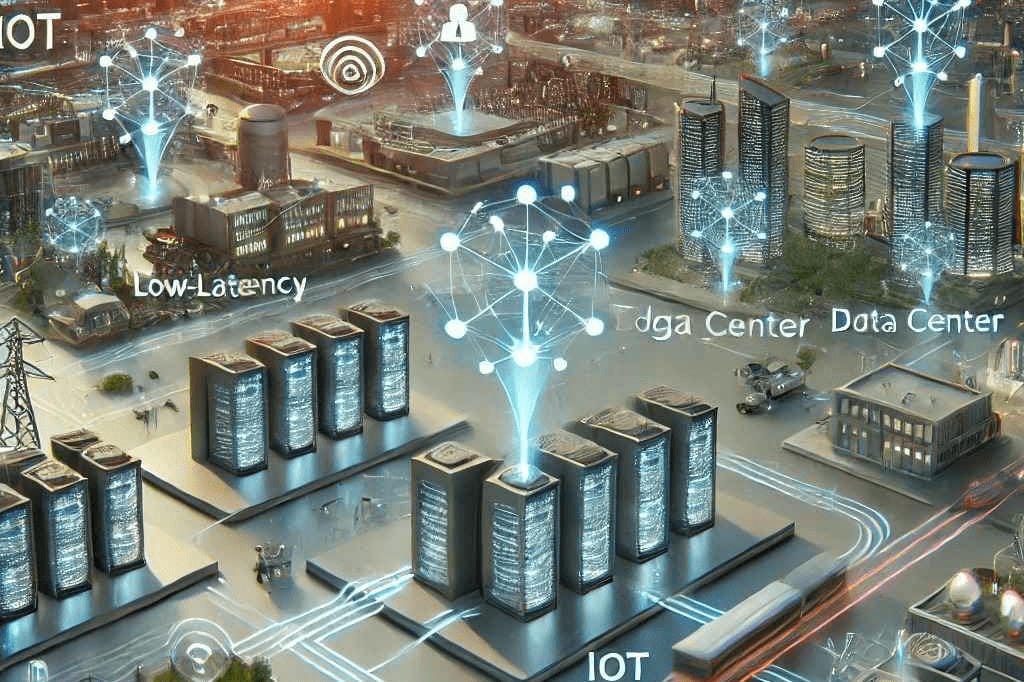17 September 2024
What is an Edge Data Center and What Are Its Benefits?
Edge Data Center is a data storage facility provided and located near users or devices utilizing its services. Unlike traditional data centers that are centralized and located far from end-users, edge data centers are designed to process data closer to where it is generated and used. This provides higher speed and reduces latency since data doesn't need to be sent to a distant data center.
Edge data centers are generally smaller than conventional data centers and are often placed in various strategic locations, such as major cities, industrial areas, or even rural regions, depending on local data needs. They also support modern technology infrastructures such as the Internet of Things (IoT), 5G, cloud computing, and AI-based applications that require real-time data processing.
Main Function of Edge Data Centers
The primary function of edge data centers is to process, store, and manage data, bringing it closer to the users or devices that need quick and accurate access. This is highly useful in situations that require rapid response times, such as IoT applications, autonomous vehicles, and augmented reality or virtual reality (AR/VR) systems.
Decentralized Architecture
Edge data centers operate with a decentralized model, where several small data centers are placed in various geographical locations to meet local needs. This architecture differs from the traditional approach of using one or a few large centralized data centers. Decentralization enables faster data management and processing while reducing the strain on the core network.
Benefits of Edge Data Centers
- Latency Reduction: One of the main advantages of edge data centers is latency reduction. Since the data center is located closer to the users or devices accessing it, the time required to transfer data is significantly reduced. This latency reduction is critical for applications that require fast response times, such as traffic control systems, autonomous vehicles, and VR/AR applications.
- Bandwidth Savings: By processing data near its source, edge data centers can help reduce the need to send large amounts of data to the central data center, thereby reducing bandwidth usage. This not only saves operational costs but also improves network efficiency, especially in areas with limited internet access.
- Reliability and Resilience: Edge data centers provide additional redundancy to IT systems. If there is an outage at the main data center, edge data centers can still function and maintain service continuity. This makes edge data centers a critical solution for industries that cannot tolerate downtime, such as healthcare, manufacturing, or financial services.
- Supporting IoT and Future Applications: The rapid growth of the Internet of Things (IoT) requires fast and efficient data processing. Edge data centers allow IoT devices to collect, process, and exchange data locally without relying on distant data centers. This supports a more efficient IoT infrastructure and prepares for future technologies such as 5G networks, which demand low latency and real-time data performance.
- Scalability: Edge data centers offer easier scalability and are more cost-effective compared to traditional data centers. Due to their modular and decentralized nature, companies can add edge data center capacity in various locations according to needs without large-scale expansions in a single data center.
Use Cases
Edge data centers are widely used across various industries, including:
- Telecommunications: Supporting the rollout of 5G networks by providing low-latency and real-time data processing in strategic locations.
- IoT (Internet of Things): Facilitating data processing from widely distributed IoT devices, such as sensors, cameras, and other smart devices.
- Gaming and VR/AR: For real-time applications like online gaming and augmented reality, edge data centers provide faster response times and smoother user experiences.
Security
Security at edge data centers is also a critical focus, given that much sensitive data is processed in locations that may be less secure than traditional data centers. Therefore, robust security systems, such as data encryption, firewalls, and continuous monitoring, are essential to protect data at the edge.
Management and Monitoring
Managing edge data centers requires a more complex approach compared to centralized data centers, as small units are spread across various geographical locations. Remote monitoring and management solutions must be implemented to ensure optimal performance at each edge data center.
Costs and Investment
The cost of building edge data centers can be lower than large traditional data centers, but the larger number of edge data centers may require additional operational investment. This depends on the location, scale, and specific needs of the company implementing them.
Related Technology Trends
Several technology trends driving the increased adoption of edge data centers include:
- 5G: 5G networks drive the need for low-latency local data processing, which is accommodated by edge data centers.
- AI and Machine Learning: Edge data centers support AI-based applications that require real-time data analysis, such as video analytics and facial recognition.
- Cloud-Edge Hybrid: Combining cloud and edge data centers creates a more efficient ecosystem for managing data at various levels.
Understanding the concept, benefits, challenges, and supporting technologies of edge data centers is essential for organizations looking to leverage the power of local data processing. With proper adoption, edge data centers can offer competitive advantages through speed, efficiency, and flexibility.
Thus, edge data centers play an essential role in modern digital infrastructure. By reducing latency, saving bandwidth, improving reliability, and supporting IoT and future applications, edge data centers provide a more efficient and flexible solution compared to traditional data centers. As technologies like 5G and AI continue to develop, the adoption of edge data centers across various sectors is expected to increase.
Is this information helpful?
